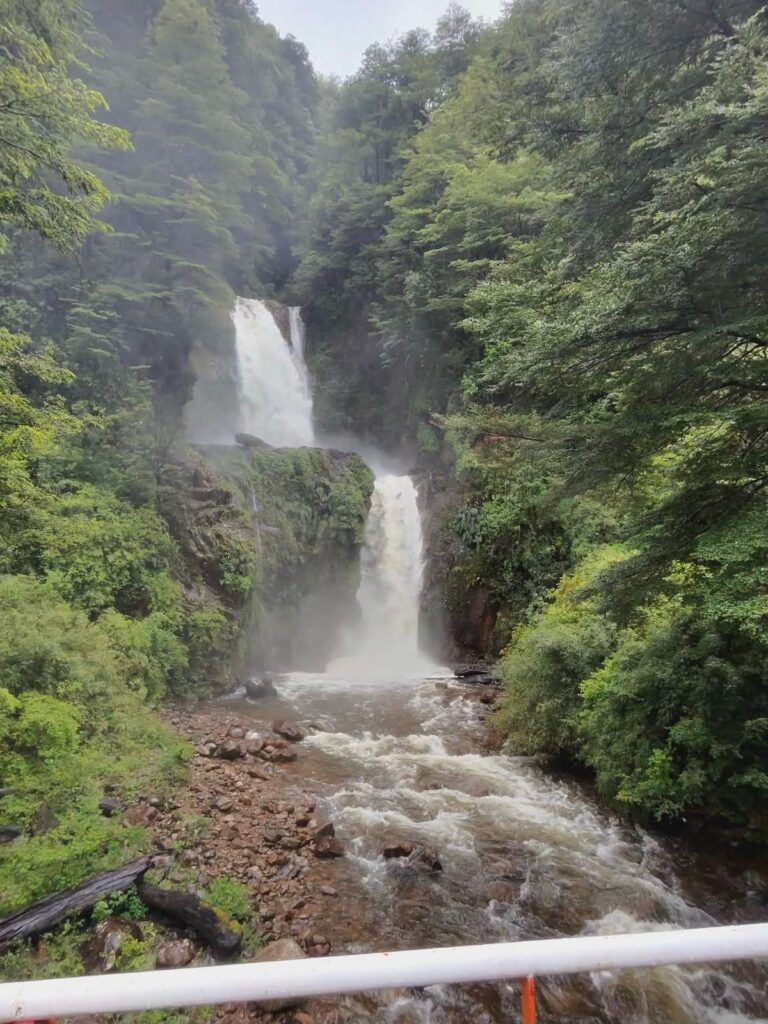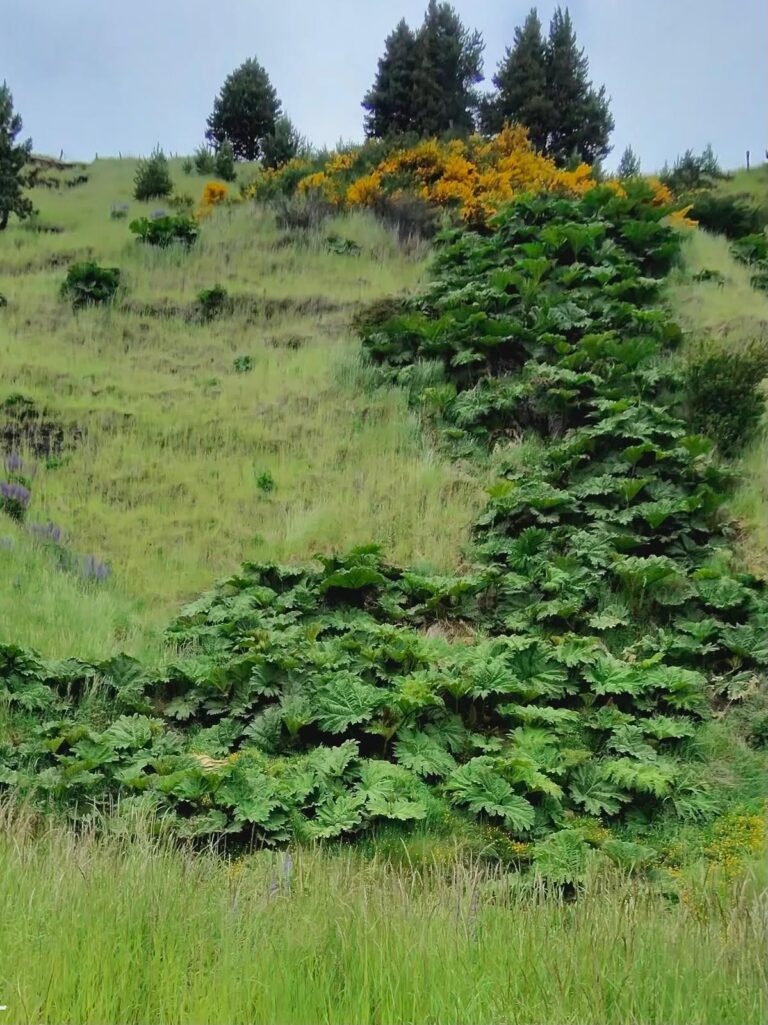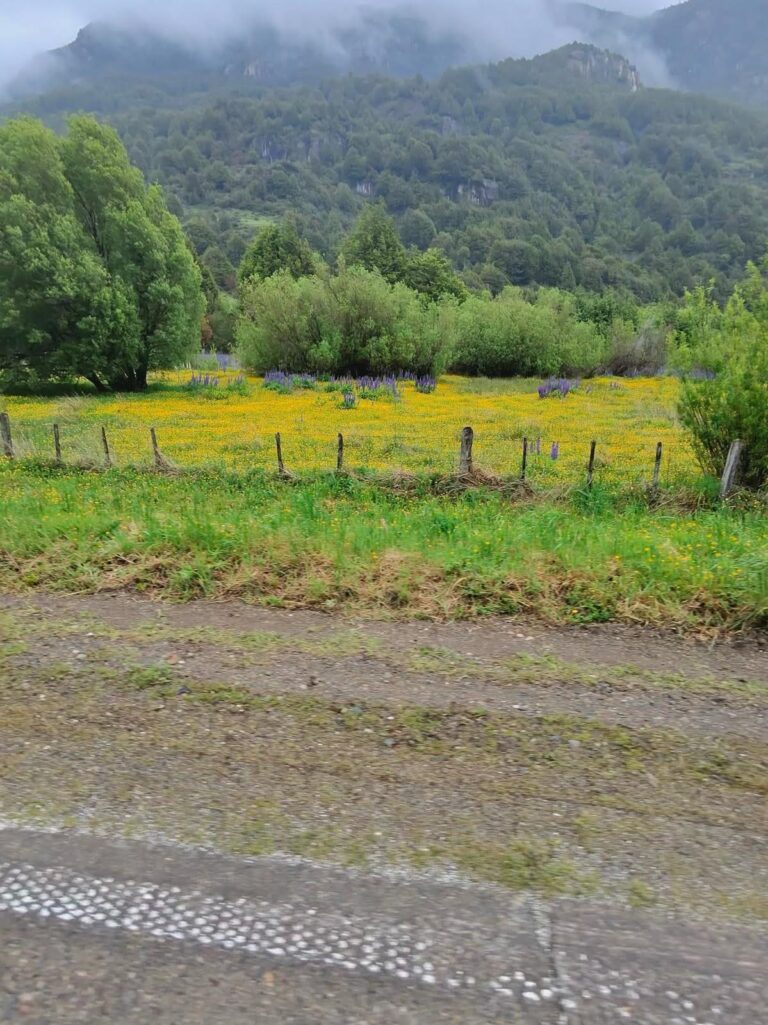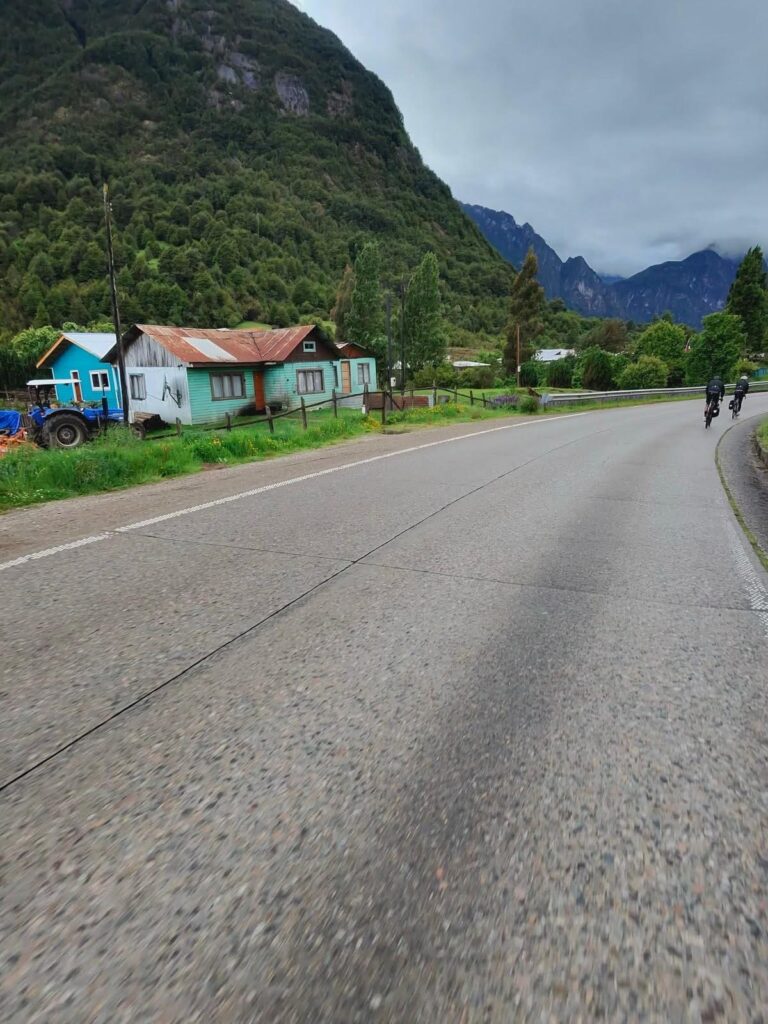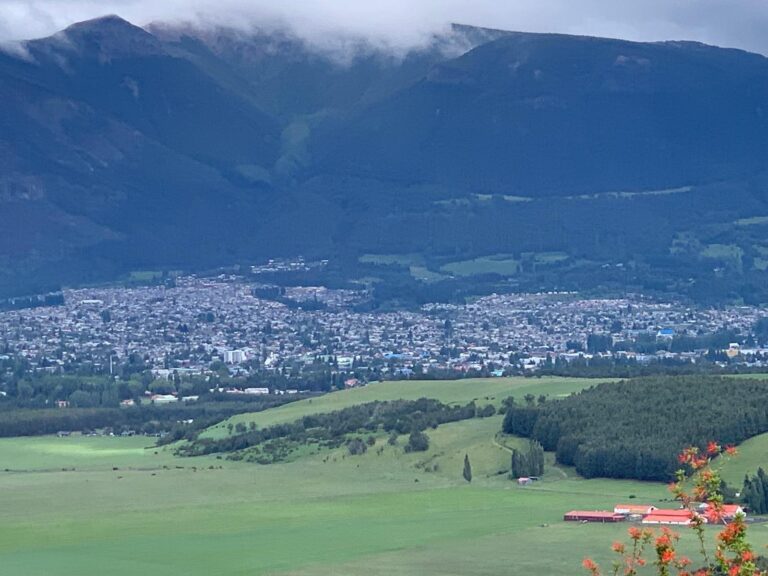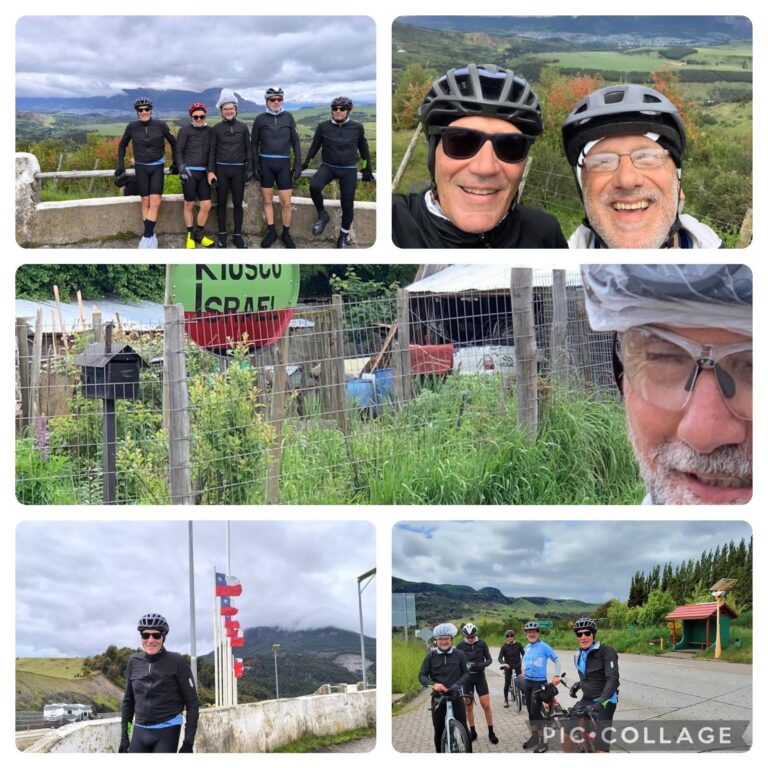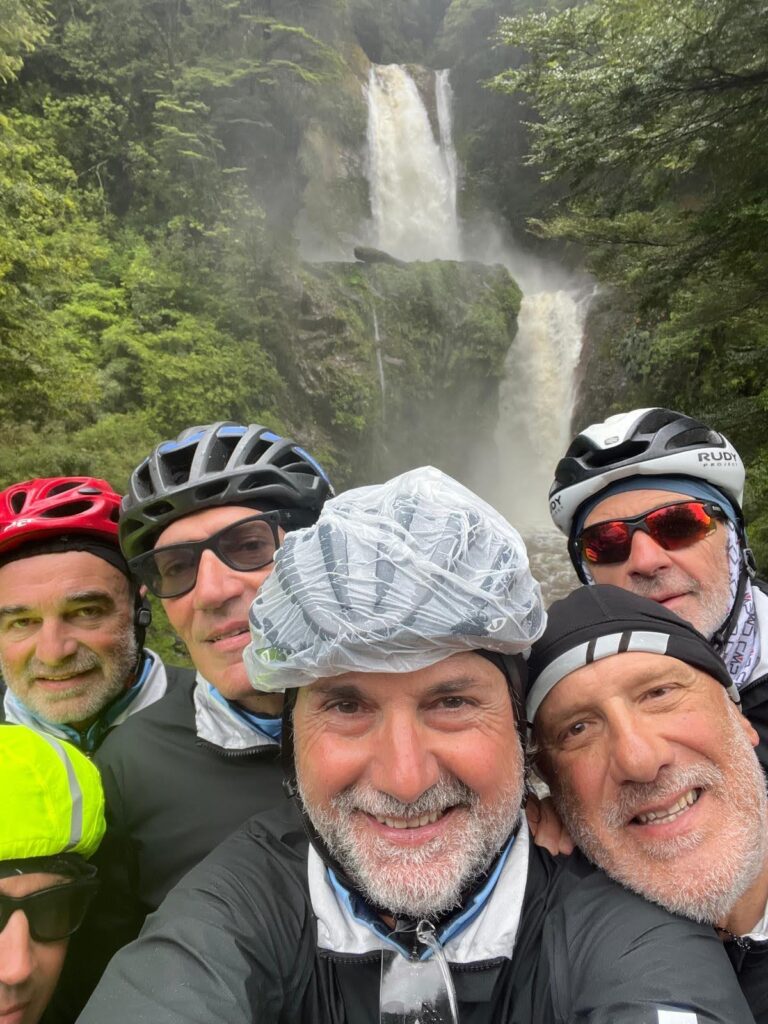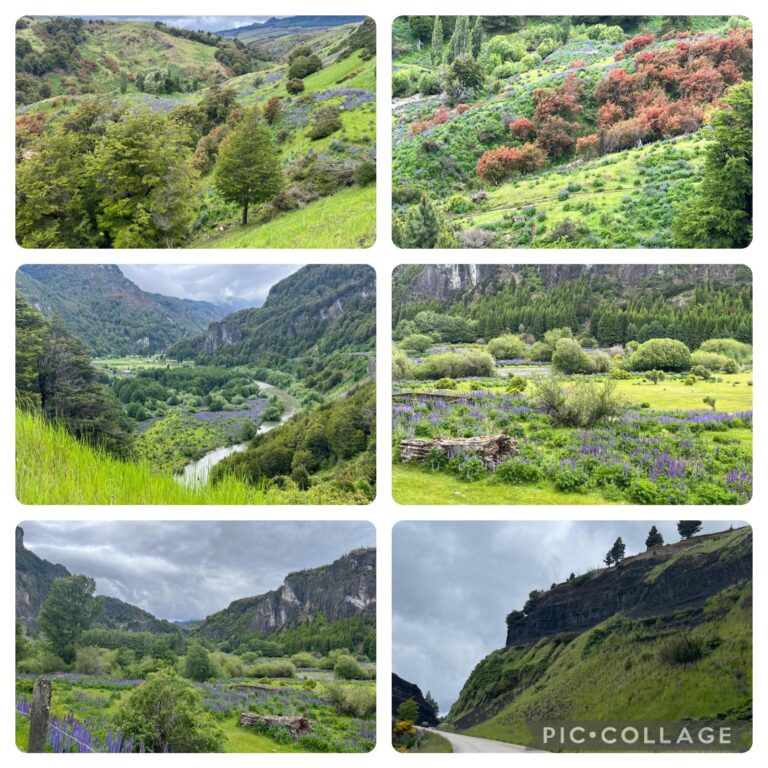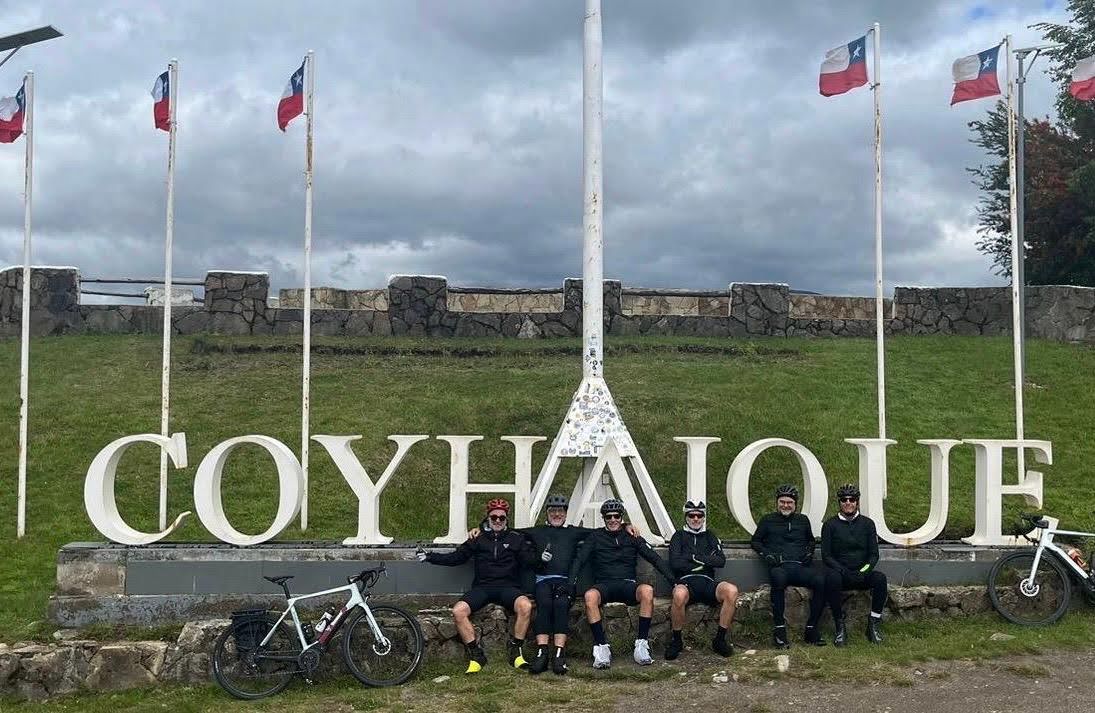
ARRIVAL AT COYHAIQUE
November 28, 2024
This morning, we left a bit late (at 11 a.m.) hoping the rain would ease up, but in vain. In the end, we set off in the rain from the cabaña (Refugio Macales) and rode 58 km to reach the city of Coyhaique.
It was a relatively easy transfer stage to Coyhaique, a city of 50,000 inhabitants in the Aysén region, where we’ll stay for two days before starting the grueling ripio route to O’Higgins. Tomorrow, we’ll explore nearby in search of the mythical Trapananda.
We made friends with a dog that trotted along the roadside with us for 5 km.
Once again, we enjoyed stunning vegetation: small trees with red flowers (Chilco), bushes with yellow flowers (retama amarilla), and purple lupines. At last, we figured out that the large green leaves we often see along the roadside belong to rhubarb.
One aspect of the landscape we hadn’t highlighted before is the constant presence of streams, rivers, and waterfalls—a land with abundant water. No surprise, given how much rain we’ve been cycling through. Imagine, November is one of the driest months of the year here!
Now we’re in Coyhaique. Nicola and Sebastián are sleeping in the camper to start acclimating to the tough life awaiting us further south in Patagonia, a region famously called “the end of the world.”
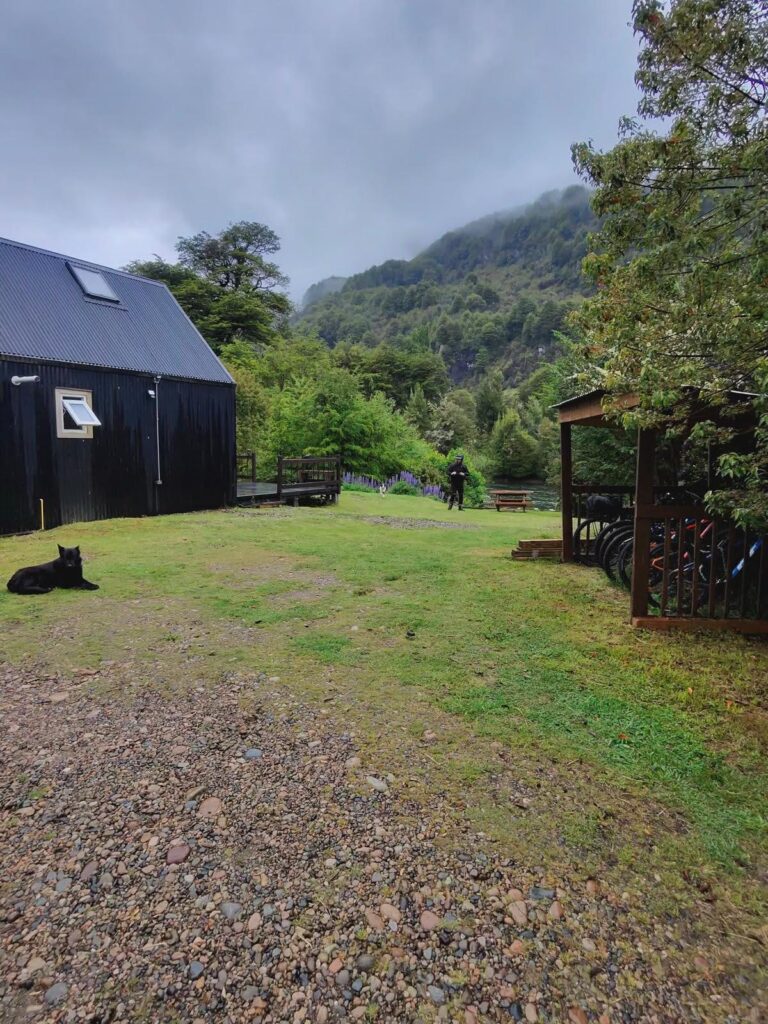
Friendship with one of the many dogs of the area, who followed us for 5 km
